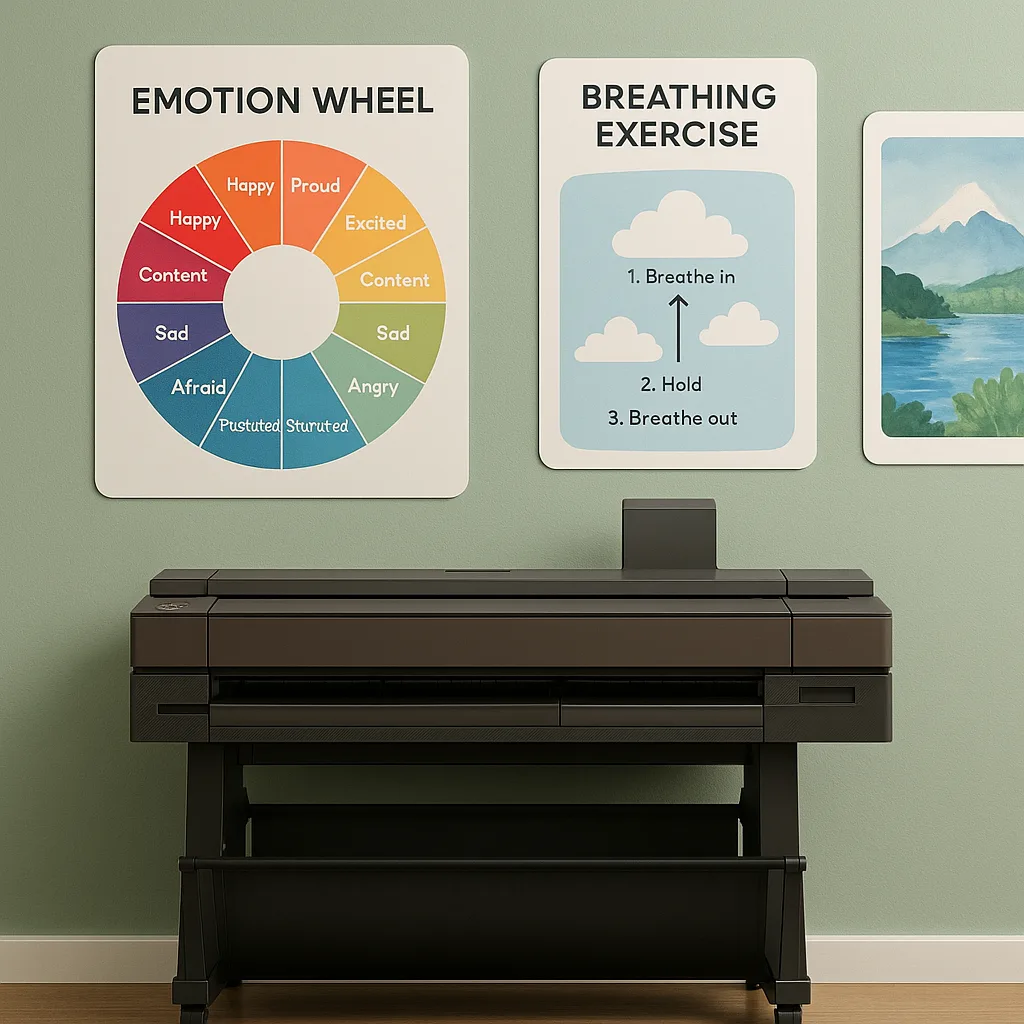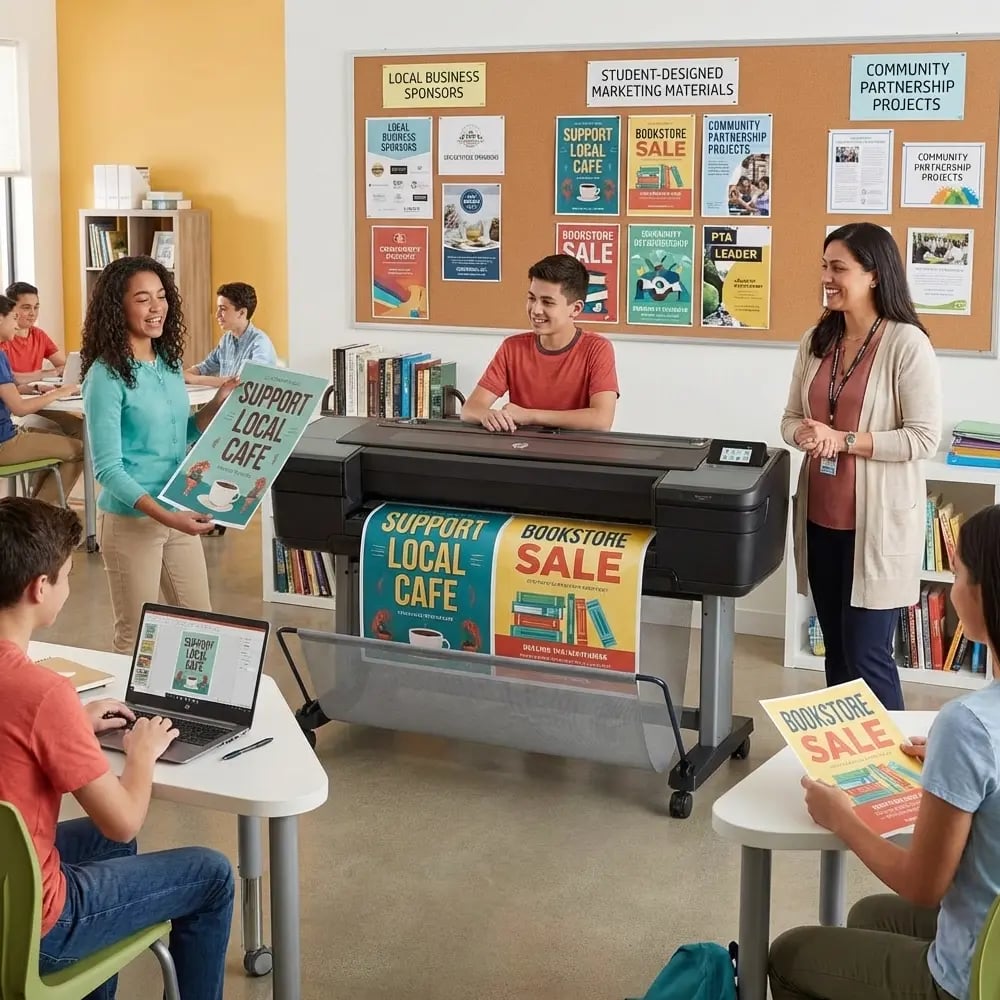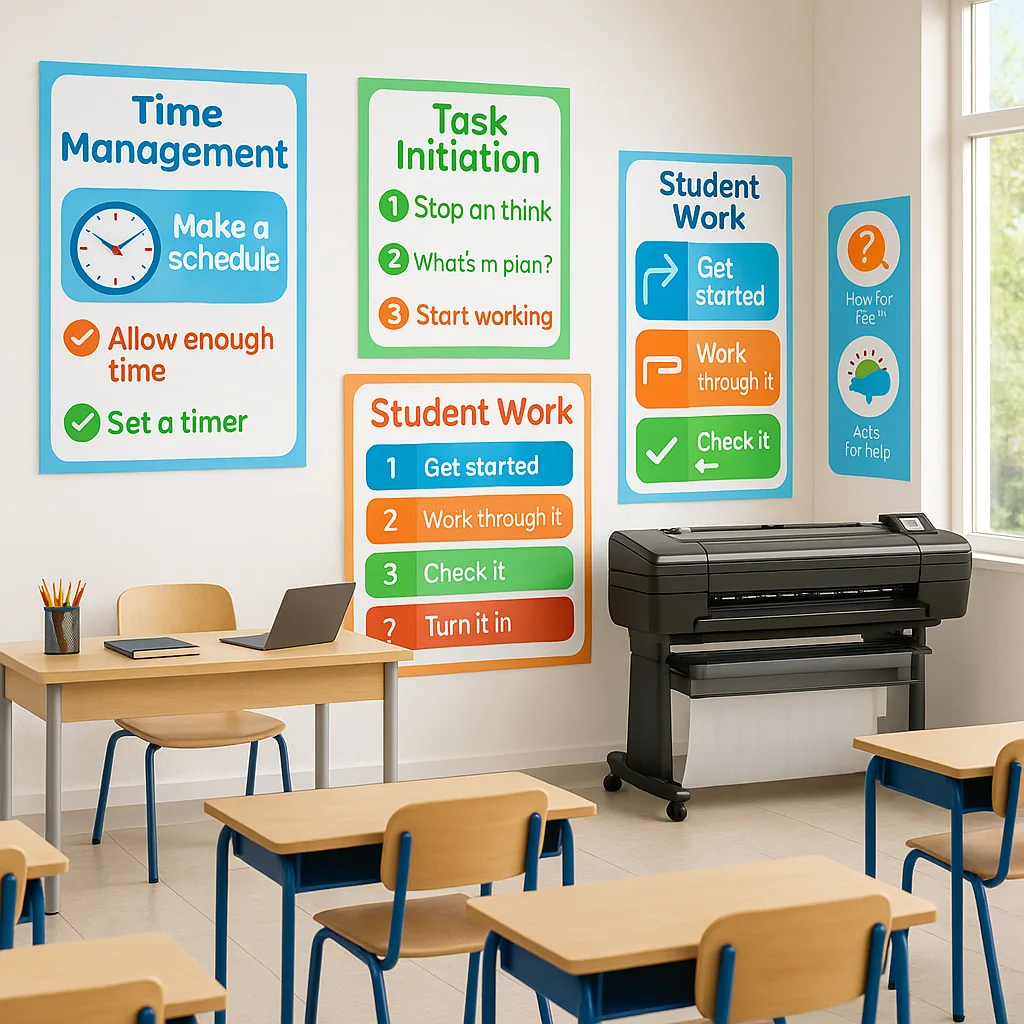
Trauma-Informed Poster Design for Healing Classrooms
Trauma-Informed Visual Environments
Creating Healing Spaces with Thoughtful Design
I’ll never forget walking into Ms. Rodriguez’s third-grade classroom after winter break. Where bright primary colors once dominated, soft blues and greens now created a gentle landscape. “Three of my students experienced significant trauma over the holidays,” she explained quietly. That’s when I realized how crucial our visual environments are for healing—and how a poster making machine trauma-informed approach can transform spaces into sanctuaries.
Research from the Center for Health Care Strategies shows that one in four children experience trauma before age 16. Moreover, these experiences can significantly impact learning, behavior, and emotional regulation. For this reason, creating visually supportive environments isn’t just about aesthetics—it’s about providing psychological safety through thoughtful design choices.
Understanding Trauma’s Visual Impact
Trauma affects how students process visual information. Consequently, certain colors, images, or spatial arrangements can trigger stress responses. The National Child Traumatic Stress Network identifies several visual triggers that educators should consider:
• High-contrast patterns that overstimulate • Aggressive or sharp imagery • Cluttered or chaotic visual fields • Unpredictable spatial arrangements • Colors associated with traumatic memories
Understanding these triggers helps us design spaces that promote calm rather than chaos. Furthermore, thoughtful poster placement and design can actively support emotional regulation.

Color Psychology in Healing Spaces
Color profoundly impacts emotional states and stress levels. Research from the International Association of Color Consultants demonstrates specific effects:
When selecting poster colors with your poster printer machines, consider these trauma-informed guidelines:
Blues and Greens: Activate the parasympathetic nervous system, promoting calm Soft Purples: Support emotional processing without overstimulation Warm Neutrals: Create safety through predictability Muted Earth Tones: Ground students in the present moment
Avoid fluorescent colors, stark black-and-white contrasts, and aggressive reds unless used sparingly for specific purposes.
Implementing Your Poster Making Machine Trauma-Informed Strategy
Creating healing visual environments requires intentional planning. Here’s a step-by-step approach:
1. Assess Your Current Environment
Walk through your space with fresh eyes. Document areas that feel overwhelming or chaotic. Note high-traffic zones where students might feel trapped or cornered. Subsequently, identify calm corners that could become regulation stations.
2. Design with Zones in Mind
Create distinct visual zones using your poster placement: • Entry Zone: Welcoming, predictable imagery • Learning Zone: Clear, organized instructional posters • Calm Zone: Minimal visuals, nature imagery • Choice Zone: Student-selected displays
The Education Express 36 Poster Printer provides the perfect canvas size for creating these zone markers.
3. Select Imagery Mindfully
Choose images that promote safety and connection: • Nature scenes (proven to reduce cortisol) • Diverse faces showing calm expressions • Predictable patterns like mandalas • Abstract art in soothing colors • Affirmations with gentle fonts
Spatial Arrangement for Psychological Safety
The placement of visual materials significantly impacts student stress levels. Research from the University of Salford found that classroom design affects learning progress by up to 25%.
Traditional Placement
Posters covering every wall surfaceWhy It May Trigger
Visual overload can trigger hypervigilance in trauma-affected students. The brain cannot filter important from unimportant information, creating constant stress.Trauma-Informed Placement
Strategic placement with visual breathing roomHow It Helps
Organized displays with clear borders help the nervous system predict and process information safely, reducing anxiety.Key spatial principles include:
The 60-30-10 Rule: 60% neutral wall space, 30% educational content, 10% decorative elements. This ratio prevents visual overwhelm while maintaining engagement.
Eye-Level Considerations: Place calming imagery at seated eye level. Furthermore, ensure no poster creates a “looming” effect that might trigger threat responses.
Clear Pathways: Maintain unobstructed sight lines to exits. Students who’ve experienced trauma need to see escape routes clearly.
Flexible Displays: Use your poster making machine to create seasonal rotations. This prevents habituation while maintaining predictability.
Creating Regulation Stations with Visual Supports
Dedicated calm-down spaces require special visual consideration. Your poster printer machines can create specialized materials for these areas:
Each visual should use: • Muted, analogous color schemes • Simple, clear instructions • Minimal text with supportive imagery • Rounded edges and soft shapes • Nature-based backgrounds
The Education Studio 24″ Package A+ includes waterproof inks perfect for creating durable regulation tools that withstand frequent handling.
Student Voice in Visual Design
Empowering students to contribute to their visual environment builds agency—crucial for trauma recovery. Therefore, consider these collaborative approaches:
Choice Boards: Let students vote on poster themes monthly Student Art Integration: Scan and enlarge calming student artwork Affirmation Co-Creation: Design positive messages together Cultural Representation: Include imagery reflecting all students’ backgrounds
Using your poster making machine for student-generated content transforms the classroom from something done “to” them into something created “with” them.
Measuring Impact and Adjusting
Creating trauma-informed visual environments requires ongoing assessment. Track these indicators:
Document changes through: • Student feedback surveys • Behavioral data tracking • Photographic before/after comparisons • Teacher observation logs • Parent communication about home carryover
Remember, small adjustments can yield significant results. For instance, one teacher reported a 40% decrease in meltdowns after simply moving high-stimulation posters away from the quiet corner.
Practical Implementation Timeline
Transforming your space doesn’t happen overnight. Here’s a realistic timeline:
Resources and Support
Building trauma-informed visual environments requires ongoing learning. These resources provide deeper understanding:
• National Child Traumatic Stress Network: Evidence-based practices • Trauma Informed Oregon: Practical implementation guides • SAMHSA: Trauma-informed principles
Additionally, Poster Studio Express offers specialized support through our Lifetime Design Service. Our human designers understand trauma-informed principles and can help create appropriate visuals for your specific needs.
Did You Know? Schools using trauma-informed visual design report 65% fewer behavioral incidents and improved academic engagement.
Transform Your Classroom Into a Healing Space
Your poster making machine trauma-informed approach can create environments where all students thrive. Let Poster Studio Express help you design spaces that heal.







